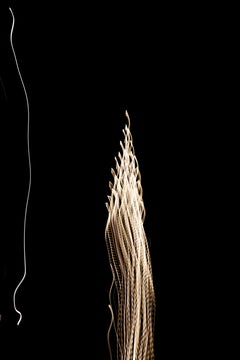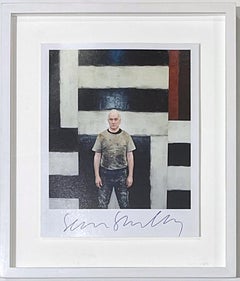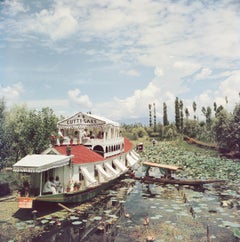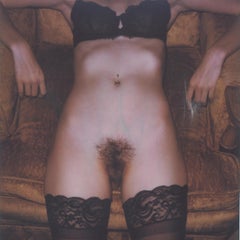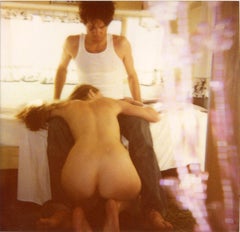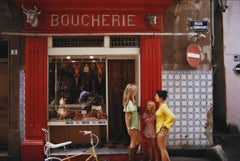Color Photography
20th Century American Modern Color Photography
Photographic Paper, C Print, Color, Digital
2010s Contemporary Color Photography
Photographic Paper, Polaroid, Color, C Print, Archival Paper
Early 2000s Contemporary Color Photography
Photographic Paper, C Print, Color, Polaroid
1960s Modern Color Photography
Archival Pigment
20th Century American Modern Color Photography
Photographic Paper, C Print, Color, Digital
21st Century and Contemporary American Modern Color Photography
Archival Ink, Archival Pigment
21st Century and Contemporary American Modern Color Photography
Archival Ink, Archival Pigment
Early 2000s Contemporary Color Photography
Archival Paper, Photographic Paper, Color
20th Century American Modern Color Photography
Photographic Paper, C Print, Color, Digital
Early 2000s Contemporary Color Photography
Photographic Paper, Color, Archival Paper
2010s Contemporary Color Photography
Silver Gelatin, Color, C Print, Photographic Paper
Early 2000s Contemporary Color Photography
Photographic Paper, Polaroid, Color, C Print, Archival Paper
2010s Contemporary Color Photography
C Print, Color, Polaroid
1990s Contemporary Color Photography
Photographic Paper, Polaroid, Color, C Print, Archival Paper
Early 2000s Contemporary Color Photography
Archival Paper, Photographic Paper, C Print, Color, Polaroid
Early 2000s Contemporary Color Photography
Archival Paper, Photographic Paper, C Print, Color, Polaroid
20th Century American Modern Color Photography
Photographic Paper, C Print, Color, Digital
2010s Contemporary Color Photography
Archival Paper, Photographic Paper, C Print, Color, Polaroid
20th Century American Modern Color Photography
Photographic Paper, C Print, Color, Digital
2010s Contemporary Color Photography
Archival Paper, C Print, Color, Polaroid
20th Century American Modern Color Photography
Photographic Paper, C Print, Color, Digital
2010s Contemporary Color Photography
Archival Paper, Photographic Paper, C Print, Color, Polaroid
2010s Contemporary Color Photography
Photographic Paper, Polaroid, Color, C Print, Archival Paper
1970s Modern Color Photography
Archival Pigment
Early 2000s Contemporary Color Photography
Archival Paper, Polaroid, Archival Pigment, Color, Archival Ink
21st Century and Contemporary American Modern Color Photography
Archival Pigment
Early 2000s Contemporary Color Photography
Photographic Paper, Color, Archival Paper
2010s Contemporary Color Photography
Digital
21st Century and Contemporary Contemporary Color Photography
Archival Paper, Photographic Paper, Giclée, Archival Pigment
Early 2000s Contemporary Color Photography
Archival Paper, Photographic Paper, C Print, Color, Polaroid
21st Century and Contemporary Contemporary Color Photography
Archival Ink, Archival Paper, Photographic Paper, Giclée, Archival Pigment
Early 2000s Contemporary Color Photography
Archival Paper, Photographic Paper, C Print, Color, Polaroid
1990s Contemporary Color Photography
Archival Paper, Photographic Paper, C Print, Color, Polaroid
2010s Pop Art Color Photography
Photographic Paper, C Print, Color, Silver Gelatin
1960s Realist Color Photography
Lambda
2010s Contemporary Color Photography
Archival Ink, Archival Paper, Rag Paper, Archival Pigment, Oil Pastel, Oil
2010s Contemporary Color Photography
Photographic Paper, C Print, Color, Silver Gelatin
21st Century and Contemporary Contemporary Color Photography
Photographic Film, Photographic Paper
21st Century and Contemporary Color Photography
Archival Pigment
2010s Op Art Color Photography
Photographic Paper, C Print, Giclée, Archival Pigment
1980s Modern Color Photography
Archival Pigment
1950s Modern Color Photography
Archival Pigment
1960s Modern Color Photography
Color, Archival Pigment
2010s Pop Art Color Photography
Photographic Paper, C Print, Color, Silver Gelatin
1960s Modern Color Photography
Color, Archival Pigment
21st Century and Contemporary Contemporary Color Photography
Archival Pigment
20th Century American Modern Color Photography
Photographic Paper, C Print, Color, Digital
1970s Modern Color Photography
Archival Pigment
2010s Contemporary Color Photography
Digital
1970s Modern Color Photography
Archival Pigment
1980s Modern Color Photography
Archival Pigment
Early 2000s Contemporary Color Photography
Photographic Paper, C Print, Color, Silver Gelatin
2010s Contemporary Color Photography
Digital
2010s Pop Art Color Photography
Photographic Paper, C Print, Color, Silver Gelatin
2010s Contemporary Color Photography
Archival Paper, Photographic Paper, C Print, Color, Polaroid
1960s Realist Color Photography
Lambda
2010s Contemporary Color Photography
Archival Pigment
2010s Contemporary Color Photography
C Print
2010s Contemporary Color Photography
Digital Pigment
2010s Contemporary Color Photography
Digital Pigment
Decorating with Color Photography
Color photography evokes emotion that can bring a viewer into the scene. It can transport one to faraway places or back into the past.
The first color photograph, taken in 1861, was more of an exercise in science than art. Photographer Thomas Sutton and physicist James Clerk Maxwell used three separate exposures of a tartan ribbon — filtered through red, green and blue — and composited them into a single image, resulting in the first multicolor representation of an object.
Before this innovation, photographs were often tinted by hand. By the 1890s, color photography processes were introduced based on that 1860s experiment. In the early 20th century, autochromes brought color photography to a commercial audience.
Now color photography is widely available, with these historic photographs documenting moments and scenes that are still vivid generations later. Photographers in the 20th and 21st centuries have offered new perspectives in the evolving field of modern color photography with gripping portraiture, snow-capped landscapes, stunning architecture and lots more.
In the voluminous collection of photography on 1stDibs, find vibrant full-color images by Slim Aarons, Helen Levitt, Gordon Parks, Stefanie Schneider, Steve McCurry and other artists. Bring visual interest to any corner of your home with color photography — introduce a salon-style gallery hang or another arrangement that best fits your space.
Read More
Welcome to the Surreal and Sensual World of Mona Kuhn
The photographer made her name shooting luminous nudes. Her latest works reframe what an image can hold.
This Week-Old Calf Named Bug Is One of Randal Ford’s Most Adorable Models
In a recent collection of animal portraits, he brings fashion photography to the farm.
Photographer to Know: Rinko Kawauchi
From toddlers playing to fires blazing, the Japanese lenswoman poetically captures fleeting dramas on planet Earth.
Queen Elizabeth’s Life in Photos
She was one of the most photographed women in history, but the world’s longest-reigning queen remained something of a mystery throughout her decades on the throne.
Photographer to Know: William Klein
The noted lensman brought a bold sense of irony to fashion photography in the 1950s and '60s, transforming the industry. But his work in street photography, documentary filmmaking and abstract art is just as striking.
5 Reasons to Collect Art
From discovering new mediums to supporting rising talents, there are many good motives for building a collection of meaningful works. Learn the hows and whys of art collecting with our guide.
In Karen Knorr’s Sumptuous Photos, Exotic Animals Appear in Opulent Palaces
The Frankfurt-born, London-based American photographer has gone global with her popular "India Song" pieces, and, while her work has long featured figures lingering in lavish spaces, the species of her characters and underlying messages shift drastically from series to series.
Alex Prager’s Cinematic Photos Freeze Time in Moments of Curious Action
In her new show, "Part One: The Mountain," the acclaimed photographer captures a variety of characters suspended in midair.
